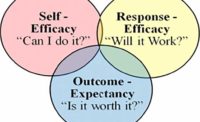When developed appropriately, performance objectives guide and motivate individuals. They are not generic mission statements relevant for an entire workforce. Rather, they are specific goals owned by an individual worker. Let's consider seven qualities of effective performance objectives.
1) Employees should define objectives
If you want objectives to direct and motivate performance, then the performer must take part in defining the specific objectives. This should occur in a private conversation between a worker and his or her supervisor. The supervisor should offer advice regarding the development of personal work objectives, and must give approval of the final list. It's appropriate for managers to suggest areas (such as safety) in which performance objectives are needed and to offer ideas. But the employee must perceive personal choice in this process.2) Use "smart" goals
MyISHNarticle in September 1994 introduced the acronym SMART to remember the attributes of potent goals: "S" for specific, "M" for motivational, "A" for attainable, "R" for relevant, and "T" for trackable. The common meanings for these terms are sufficient to guide effective goal setting, but three of the terms connect to the psychological concepts I discussed in recentISHNarticles.
Motivational means beneficial consequences from reaching a performance objective are realized and deemed worth working for. This is the outcome-expectancy belief described in my ISHN articles last May and June. Those articles also discussed self-efficacy ("I can handle the assignment."), and response-efficacy ("The assignment will have beneficial impact."). These beliefs are necessary for competent performance and are implied by the attainable (for self-efficacy) and relevant (for response-efficacy) qualities of SMART goals.
3) Include safety goals
To make performance appraisals relevant for occupational safety, include one or more objectives related to preventing personal injury. These should be specific process activities that contribute to achieving an injury-free workplace. Eliminating a certain number of injuries should never be an objective. Instead, set goals on important safety processes relevant to the individual's domain of responsibility and influence.4) Expect "better than average"
Individuals should believe their performance objectives are attainable (reflecting a belief in self-efficacy), but they should also be challenging. Some refer to these as "stretch goals." They manifest an expectancy that the individual can do better than average, and implicate the need to periodically go beyond the call of duty.5) Keep it simple
Assigning too many performance objectives can overwhelm employees and make singular goals less significant. Psychological research has shown that people can hold about seven numbers in working memory, so it would be unwise to define more than seven performance objectives.6) Be flexible
These SMART goals should not be "carved in stone" but be flexible. Performance objectives can be altered as circumstances change. It's possible that a particular objective becomes less important, overly challenging, or simpler to achieve than initially realized.7) Review continuously
Effective performance appraisals include periodic reviews of an individual's progress in reaching specific behavioral objectives. These are the conversations that make or break the whole appraisal process. Revisions or additions to the list of objectives occur in these meetings. The employee receives competence-building feedback. The manager gives rewarding feedback to recognize specific successes, and provides corrective feedback to pinpoint opportunities for improvement.The real goal
The real benefit of a performance appraisal is not evaluation, but rather performance improvement. For this to occur, however, effective performance objectives must be created, and when goals are not met, corrective feedback must be delivered effectively, which is next month's subject.It takes special one-on-one attention between supervisors and employees to accomplish effective performance appraisals. Anything less can be a complete waste of time, and it can do more harm than good.





